The Advantages of a Desktop Swiss CNC lathe
The desktop Swiss CNC lathe will open a new opportunity window for you to expand your capabilities and reduce your outsourcing cost.
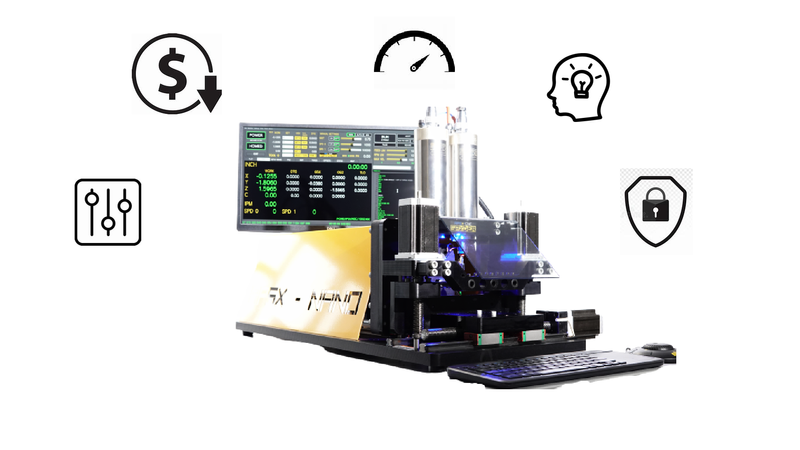
Discover the desktop machines
Have you sacrificed many good product design features because you thought you could not make a specific precision part or it would be too expensive to outsource? That’s ok because traditionally, it was the norm when we only had large, sophisticated, and expensive industrial machines. Not anymore since the introduction of the desktop machinery concept hit the market. Let me explain further.
In the rapidly evolving field of manufacturing, adopting advanced machining technologies is paramount for achieving precision, efficiency, and cost-effectiveness in manufacturing processes. While traditional, large-sized Swiss lathes have long been the standard for machining high-precision, turned small parts with small diameters, the emergence of desktop Swiss CNC lathes such as the APSX-NANO (costs less than $10K) has opened new avenues for machinists to expand their capabilities while simultaneously reducing outsourcing costs. This article delves deeper into the technical aspects and benefits of using a desktop Swiss CNC lathe over a traditional-sized Swiss lathe, focusing on reasons such as time savings, material efficiency through remnant utilization, extended tolerance ranges, and elimination of secondary operations.

In addition to the advantages over traditional-sized Swiss lathes, a desktop Swiss CNC lathe offers compelling benefits compared to outsourcing part production to a machine shop. This article will also delve into the advantages of in-house production using a desktop Swiss CNC lathe, focusing on cost savings, increased control, flexibility, faster turnaround times, confidentiality and intellectual property protection, and the potential for innovation and skill development.
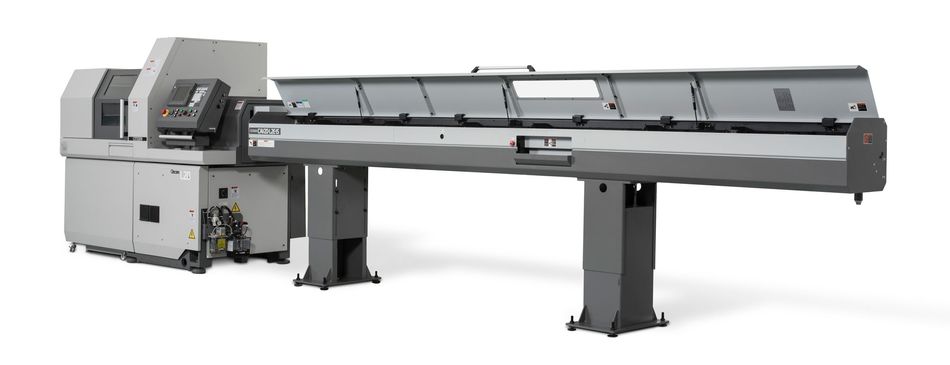
Why desktop size has advantages over regular-size Swiss lathes?
Simplified Setup for Small Quantities: Small quantity needs can be too much hassle for large Swiss lathe setup and programming times. One significant advantage of desktop Swiss CNC lathes is the simplified setup process for small-quantity production runs. In contrast to traditional machining methods, which often involve complex and time-consuming setup procedures for large Swiss lathes, desktop Swiss CNC lathes streamline the setup and programming requirements. This enables engineers to swiftly transition from design to production, saving valuable time and resources.
Time and Operation Efficiency: Time savings compared to regular CNC machines by reducing the number of operations and machine changeovers. Desktop Swiss CNC lathes are designed to save more time than regular CNC machines by minimizing the number of operations and machine changeovers. By integrating advanced automation features and efficient tooling, these machines can perform multiple operations within a single setup, significantly reducing production lead times. This enhanced efficiency empowers engineers to meet stringent project deadlines and improve productivity.
Material savings by using remnants out of regular Swiss lathes: Using remnants from regular Swiss lathes is a significant advantage offered by desktop Swiss CNC lathes. In traditional machining processes, material remnants are often discarded due to insufficient length for further machining operations. However, desktop Swiss CNC lathes can effectively utilize these remnants, minimizing waste and optimizing material usage. This feature reduces material costs and contributes to sustainable manufacturing practices. You can also use precision ground bar stocks from the market. Even if you do not need to use the whole bar, you can spare it for another project.
Good tolerance ranges for your precision targets: Desktop Swiss CNC lathes offer engineers ample tolerance ranges to meet their precision targets. Swiss machines' distinctive sliding headstock and guide bushing enable precise machining of different diameters, complex holes, hex edges, slots, and threads without requiring multiple setups or additional equipment. This capability ensures that engineers achieve their machined components' desired precision and dimensional accuracy, even for highly intricate designs.
Eliminate secondary operations by using live tools for milling and drilling: The integration of live tooling in desktop Swiss CNC lathes allows engineers to eliminate the need for secondary operations. Live tools enable milling and drilling operations to be performed directly on the machine, eliminating the requirement for additional equipment or setups. This streamlining of processes saves time and enhances overall machining accuracy and consistency.
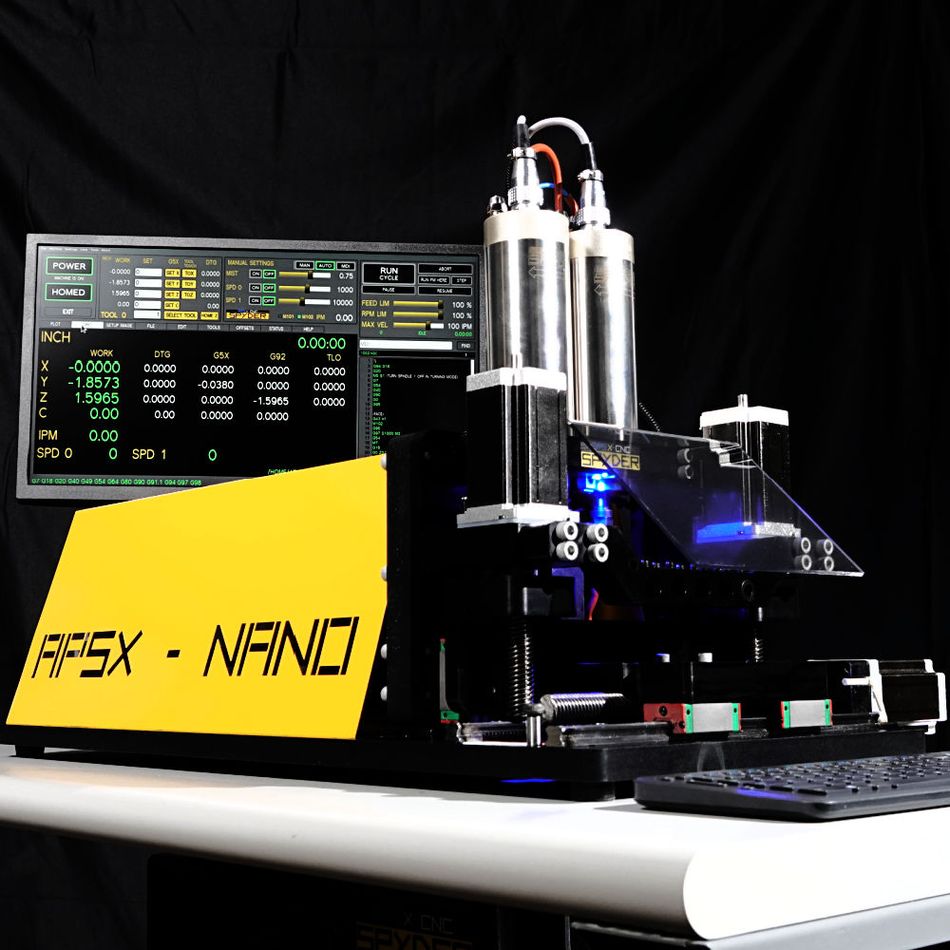
Reasons to Opt for In-House Production
One of the primary benefits of using a desktop Swiss CNC lathe in-house is the potential for significant cost savings. Outsourcing part production to a machine shop often incurs substantial costs, including markups on labor and materials, transportation expenses, and additional fees for setup and programming. By bringing production in-house with a desktop Swiss CNC lathe, these costs can be greatly reduced or eliminated altogether. The initial investment in the machine can be quickly recovered through long-term cost savings, especially for projects involving regular small-scale production runs.
Increased Control and Flexibility: Maintaining control over the production process is crucial for ensuring quality, precision, and timely delivery of parts. Using a desktop Swiss CNC lathe in-house gives engineers and machinists full control over every aspect of production, from design to final machining. This level of control allows for greater flexibility in adapting to design changes, accommodating urgent orders, and making adjustments to meet specific requirements. Making real-time modifications and optimizations can result in higher-quality parts and improved overall performance.
Faster Turnaround Times: Outsourcing part production to a machine shop often delays the production timeline. The need to communicate design specifications, coordinate with the machine shop's schedule, and account for shipping and delivery times can add significant lead times to the project. In contrast, using a desktop Swiss CNC lathe in-house allows for faster turnaround times. Design changes can be implemented immediately, and production can begin without external dependencies. This accelerated timeline enables engineers to meet tight deadlines and respond quickly to market demands.
Confidentiality and Protection of Intellectual Property: Outsourcing part production may pose risks to intellectual property and design confidentiality. Sharing sensitive designs and proprietary information with external vendors can introduce the potential for unauthorized use or leakage of valuable intellectual property. By utilizing a desktop Swiss CNC lathe in-house, companies can maintain strict control over their designs and protect their intellectual property. This ensures that confidential information remains secure and minimizes the risk of competitors gaining access to proprietary knowledge.
Potential for Innovation and Skill Development: Bringing part production in-house with a desktop Swiss CNC lathe presents an opportunity for innovation and skill development within the organization. Operating the machine internally allows engineers to explore new design possibilities, test innovative techniques, and iterate on prototypes more efficiently. The close proximity to the production process fosters a deeper understanding of the machining principles and enables engineers to enhance their skills and expertise. This continuous learning and development contribute to the company's long-term growth and competitiveness.
Why a Swiss CNC is better than a traditional CNC lathe
While traditional CNC lathes offer their own advantages, Swiss CNC lathes excel in specific areas in traditional and desktop sizes. Swiss turning is a process used for machining high-precision, turned small parts with small diameters. Swiss lathes' sliding headstock and guide bushing system are key differentiating factors. Its sliding headstock and guide bushing set Swiss machines apart from other turning machines. The sliding headstock feeds the bar stock through a guide bushing (z-axis), which supports and stabilizes the bar stock near the cutting point. This helps prevent workpiece distortion and enables the machine to accurately create different diameters, complex holes, hex edges, slots, and threads without the need for multiple setups or additional equipment.
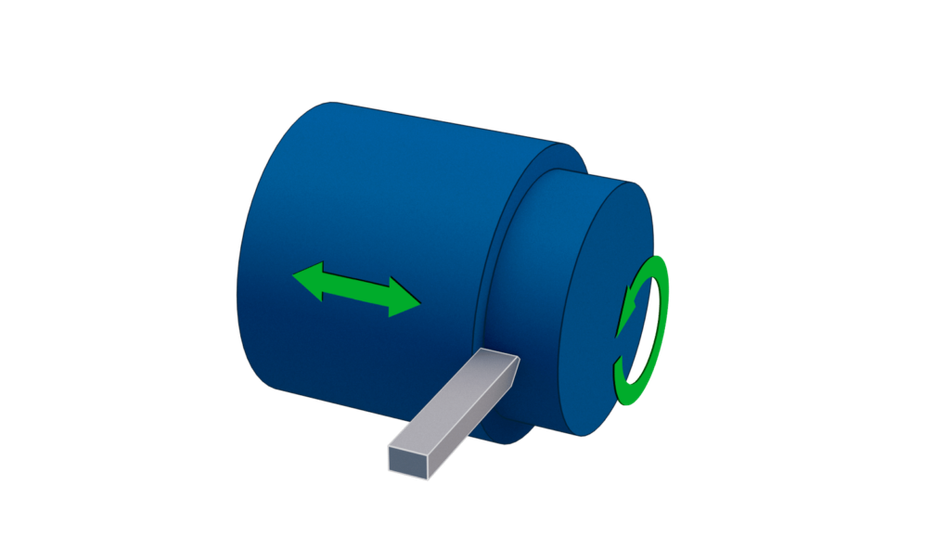
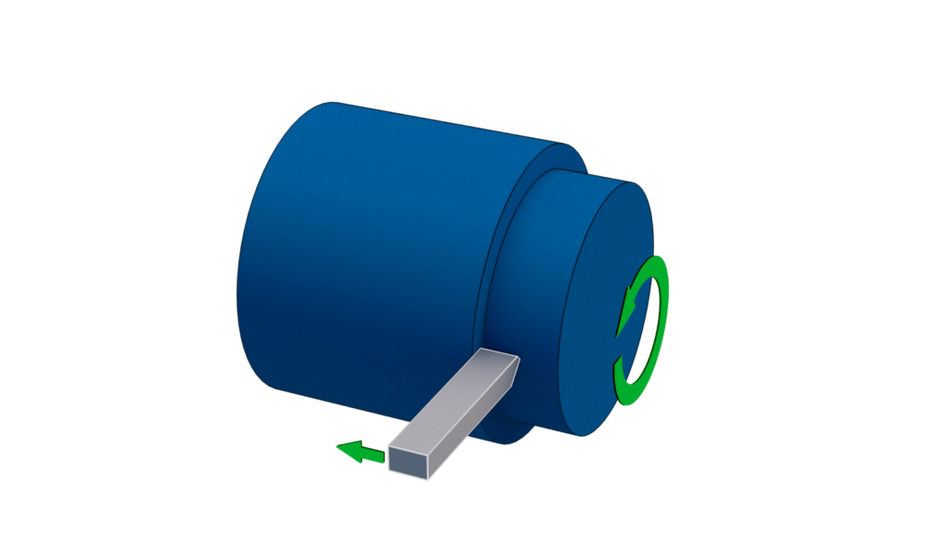
In contrast, traditional CNC lathes lack the sliding headstock feature and are more suited for larger parts and different machining requirements.
Swiss machines are also better suited for machining long parts than traditional CNC turning machines, as they are less likely to cause deflections. Industrial Swiss lathes can machine the other side of the part by using the secondary sub-spindle and chuck once the regular machining operation is done. The desktop Swiss CNC lathe may not have these capabilities.
Industry applications for Swiss machining
Swiss machining was initially used to create the tiny, intricate parts used in watches, and it’s still used to create long, small, or slender turned components across various industries.
In the defense sector, Swiss machining's high accuracy makes it ideal for manufacturing small, complex geometries with tight tolerances required for military hardware.
The medical industry benefits from Swiss machining's precision capabilities in producing components such as electrodes, anchors, and surgical tools. Precision machining processes are well suited for components such as complex hinges, pull rings, anchors, and electrodes and components for various medical instruments and devices in the diagnostic, surgical, and drug delivery fields.
Aerospace applications include the production of components with extreme precision, ranging from mechanical parts for spacecraft motors to electrical components for cockpit controls.
The automotive industry utilizes Swiss machining for fabricating bushings, pins, brake systems, and suspension components.
Additionally, the electronics industry relies on Swiss CNC machined parts for communication, defense, and electronic equipment, such as fine-threaded screws, lens housings, mounts, and connectors.
The Cost Considerations for Traditional Large Swiss CNC Lathes
Operating traditional Swiss CNC lathes can be cost-intensive due to their technologically advanced controls and high-precision capabilities. Additional expenses associated with regular-size Swiss lathes include:
- PREP WORK FOR THE GRIPPER: Bar stock diameter reduction and chamfering processes must be performed before loading into the machine.
- CENTERLESS GROUND BAR STOCKS: The length of bars is too long and gets expensive to be grinded for precision ground operation. Otherwise, the entire Swiss CNC operation would stop in case of a small jamming instance. The bar can not be too small either because it will be wiggled inside the guide bushing, deteriorate the surface finish, or break the cutting tools.
- WASTED MATERIAL DURING THE WARM-UP: Draft parts are typically produced during the warm-up phase, and most of them are discarded.
- CLEANING THE CHIP TANKS: Regular cleaning of chip tanks is necessary to prevent clogging of pumps and avoid expensive repairs. The machining area must also be kept free of accumulated chips to prevent jamming.
- OIL CONTAMINATION: The oil coolant used in Swiss lathes can adhere to parts, machine handles, and surfaces, requiring daily cleaning to maintain optimal performance.
- UNNECESSARY SPEED FOR LOW-VOLUME PRODUCTION: The high speed of traditional Swiss lathes may not be cost-effective for low-volume production. The total cost of owning a Swiss lathe can be substantial, considering additional expenses such as transportation, mist collectors, oil drums, bar feeders, and pressurized oil systems. What if you make a part in 20 seconds in a traditional Swiss machine vs. in 60 seconds in a Swiss desktop lathe? Do your math to justify the cost of a machine. They can cost $300K minimum when you add optional items to operate efficiently. That’s not always the end of the story. Things add up. You must also pay thousands of dollars for transportation to your job floor. The mist collector can be at least $5K. You pay about $2K for a drum of oil constantly. The bar feeder mechanism can cost you about $20K, which is required for a Swiss lathe. Another $10K for the pressurized oil system must be added to your system for a proper cooling process.
- RISK OF FIRE: Machining materials like titanium and stainless steel using hot and pressurized oil coolant pose a fire hazard. Fire extinguisher systems may be required to mitigate this risk, incurring additional costs. You may be required to pay a minimum of $10K for a fire extinguisher system.
- SETUP and PROGRAMMING TIME: Traditional Swiss lathes often require extensive setup time, including accurate programming, which can take days before production can commence.
- LABOR COST: Skilled operators are needed to handle the entire Swiss lathe process, including programming, setup, machining, and troubleshooting, resulting in higher labor costs.
These cost considerations emphasize the potential financial and operational advantages offered by desktop Swiss CNC lathes, which may present a more cost-effective solution for engineering applications, especially for projects involving smaller quantities or specialized requirements. The labor cost, setup time, fire risk, contamination-free parts, and material waste savings are possible with desktop Swiss CNC lathes.
Conclusion
The emergence of desktop Swiss CNC lathes has opened up new horizons for engineering professionals seeking to enhance their capabilities and reduce outsourcing costs. With benefits such as simplified setup and programming, time and operation efficiency, material savings, good tolerance ranges, and eliminating secondary operations, desktop Swiss CNC lathes offer a compelling solution for engineers working with regular-sized Swiss lathes or traditional CNC lathes. While traditional-sized Swiss lathes continue to play a crucial role in precision manufacturing, the unique features and cost considerations associated with desktop Swiss CNC lathes make them an attractive option for engineering professionals aiming to optimize performance and reduce overall expenses.
While the benefits of using a desktop Swiss CNC lathe over traditional-sized Swiss lathes are substantial, opting for in-house production with this portable machine also offers advantages over outsourcing to a machine shop. Cost savings, increased control and flexibility, faster turnaround times, confidentiality and protection of intellectual property, and the potential for innovation and skill development are key factors that make in-house production a compelling choice. By investing in a desktop Swiss CNC lathe, companies can streamline their production processes, improve quality control, and position themselves for long-term success.
References:
What it takes to operate a Swiss lathe (https://youtu.be/F_HZS_QKNmE)
Complete guide to CNC Swiss machining (https://www.fastradius.com/resources/complete-guide-cnc-swiss-machining/)
5 Tips for Swiss CNC Lathe Operators (https://www.apsx.com/5-tips-for-swiss-cnc-lathe-operators)
Discover APSX Machines: COMPACT (https://www.apsx.com/apsx-machines-compact)